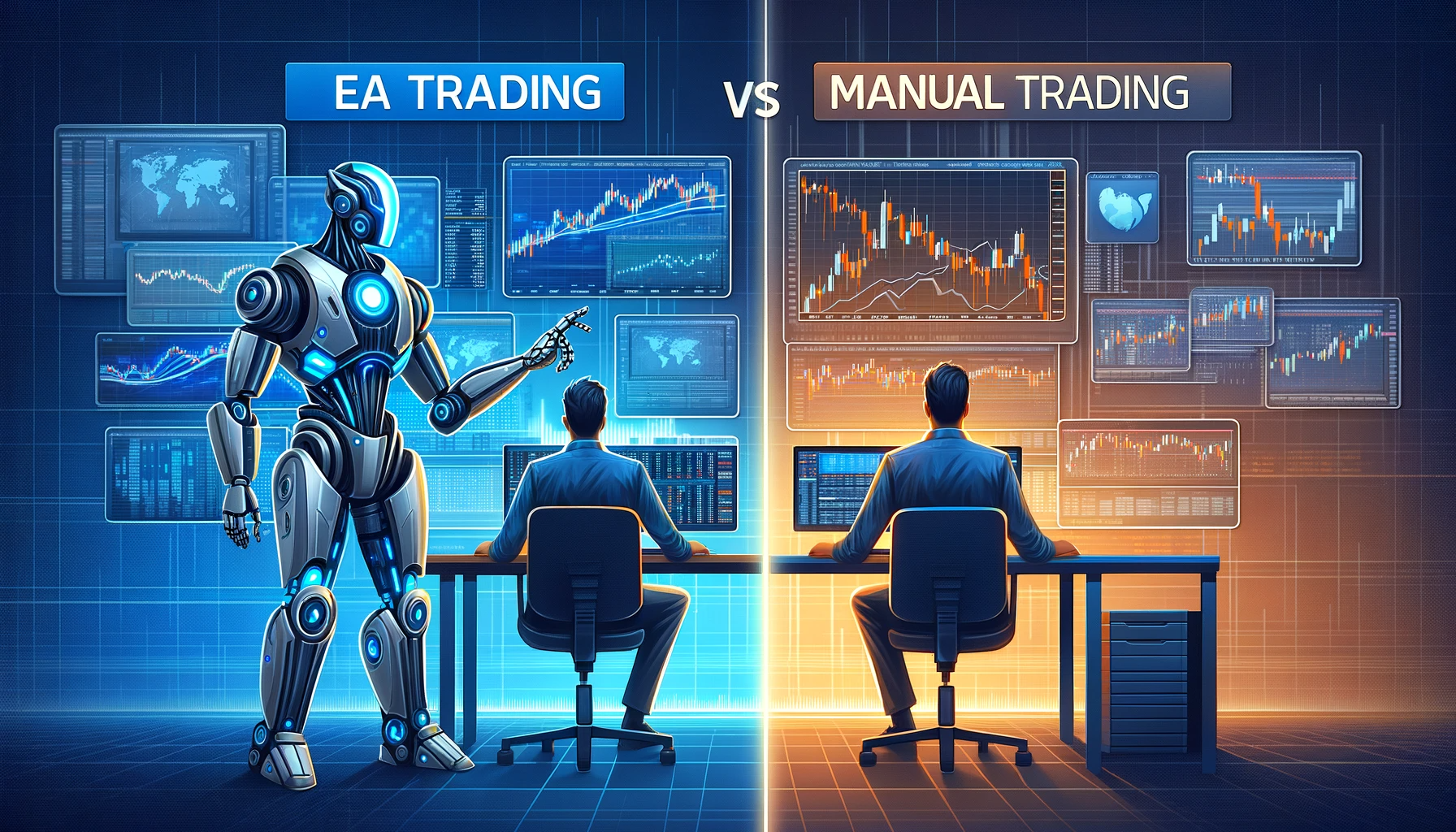Introduction: The Evolution of Trading
Trading in the financial markets has undergone significant transformation with the advent of technology. While traditional manual trading still holds a vital position, the rise of Expert Advisor (EA) or automated trading has reshaped how individuals interact with markets. This article delves into the differences between EA and manual trading, highlighting that despite these differences, the core principles of trading remain unchanged.
The Core Principles of Trading
Regardless of the method chosen, the fundamental principles of trading – such as risk management, market analysis, and decision-making based on statistical probabilities – remain consistent. Whether you’re manually analyzing charts or programming an EA, these principles form the bedrock of successful trading strategies.
Understanding EA Trading
EA trading involves the use of computer algorithms to execute trades based on pre-set criteria. This method can efficiently analyze large datasets and execute trades at a speed unattainable by humans. However, it’s crucial to understand that an EA is only as good as the instructions it’s given. The underlying algorithm reflects your trading knowledge and strategies. Therefore, a deep understanding of trading concepts is essential to develop an effective EA.
Manual Trading: The Human Touch
Manual trading, on the other hand, relies on a trader’s intuition, experience, and personal analysis. This approach allows for greater flexibility and control, as traders can respond to market changes and unforeseen events in real-time. While it may lack the speed and efficiency of EAs, manual trading offers a level of nuanced understanding that is uniquely human.
Combining the Best of Both Worlds
Instead of viewing EA and manual trading as opposing methods, it’s more productive to see EA trading as an upgrade to your trading toolkit. Incorporating EA into your strategy doesn’t mean abandoning the knowledge and experience you’ve gained through manual trading. Rather, it’s about enhancing your capabilities, allowing you to execute strategies more efficiently while freeing up time to focus on market analysis and strategy development.
The Harmony Between Technology and Knowledge
The effectiveness of EA trading largely depends on the trader’s expertise. A well-designed EA can amplify your trading strategy, but it cannot replace the fundamental knowledge and skills required in trading. The key is to use technology as a tool to implement your trading knowledge more effectively.
Conclusion: A Synergistic Approach to Trading
In conclusion, while EA and manual trading have their differences, they both operate on the same foundational principles of trading. The shift towards EA trading should be seen as an evolution, not a replacement, of traditional trading methods. By combining the efficiency of technology with the depth of trading knowledge, traders can leverage the strengths of both approaches, leading to potentially more successful and sustainable trading strategies.
